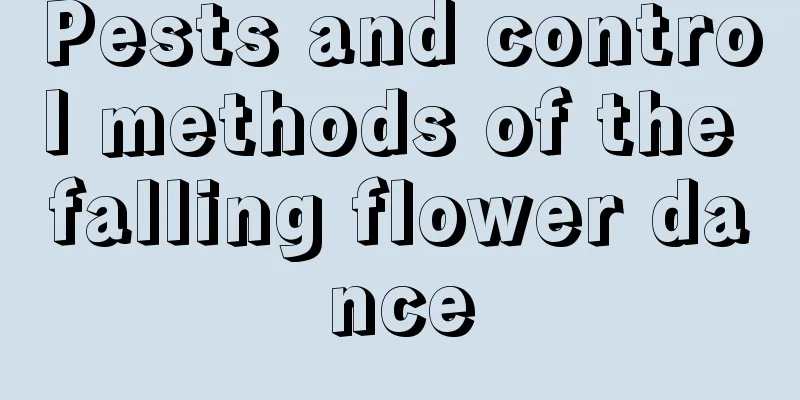Pests and control methods of the falling flower dance

Common pests of the flower dance: red spider mitesRed spider mites, also known as red spider mites, belong to the Arachnidae, Tetranychus family. There are three common similar species, which mainly harm a variety of vegetable crops such as Solanaceae, Cucurbitaceae, Leguminosae, and Liliaceae. Flower lovers should remember the morphological characteristics of red spider mites. Once discovered, kill them immediately! Morphological characteristics of red spiderAdult mite: 0.42-0.52 mm long, with large body color variations, generally red, pear-shaped, with a long black spot on each side of the back of the body. Eggs: spherical, smooth, colorless to dark yellow with red. Young mite: nearly round, with three pairs of legs. Nymph: has 4 pairs of legs and obvious blocks of pigment on the sides of the body. Characteristics of red spider pestsRed spider mites overwinter mostly in soil cracks or under tree bark near their hosts in autumn. Activities begin in early spring from February to March of the following year, and damage is gradually transferred to the plants from mid-to-late April to early May. A female mite can lay more than a hundred eggs. Adult mites and nymphs spread among plants by crawling or spinning silk, causing harm. Key points for controlling the red spider pestTake good disinfection measures to prevent the breeding of insects and mites. Strengthen insect inspections, control the situation at the stage when damage occurs in certain areas, and do a good job of checking, eradicating, picking and treating. Chemical control: Abamectin and dacarbamectin are very good agents for killing red spider mites. Focus on spraying the back of leaves, flower organs, growth points and other parts of the upper part of the plant. |
<<: Diseases and pests of succulent Thor and their control
>>: Pests and control methods of jade dew
Recommend
How to propagate Monstera by cuttings?
Monstera is a popular houseplant known for its un...
Can I use ordinary soil for my green radish?
1. Yes The vitality of the green ivy is very stro...
What flowers are suitable for growing in Anqing? What are the city flowers and trees?
1. Climate characteristics of Anqing Anqing has a...
How to prune hydrangeas and what to pay attention to
Hydrangea pruning time Hydrangeas are generally p...
How to make gourd seeds germinate quickly
Gourd seed germination environment 1. If you want...
The causes and treatment methods of black stems of roses
Black rod phenomenon There are generally two type...
What medicine is most effective for scale insects? What other methods are there?
1. What medicine to use 1. Methidathion: This is ...
Tips for indoor placement of foliage plants
1. Matching of colors and styles When placing fol...
How to prune clematis
Pruning time The best time for pruning is general...
How to grow orchids in spring
Watering method It is not necessary to water freq...
Can the hawthorn tree be transplanted in winter? In which month can it survive?
Can hawthorn trees be transplanted in winter? Haw...
When is the best time to sow dahlia seeds?
Dahlia seed sowing time Dahlia seeds are generall...
What to do if moss turns yellow
Causes and treatments of yellowing moss 1. The en...
How to breed Bafanglaicai
Bafanglaicai Growth Conditions It is not suitable...
How to grow red spider lily, red spider lily pictures
1. Breeding methods 1. Light: Red spider lily pre...









